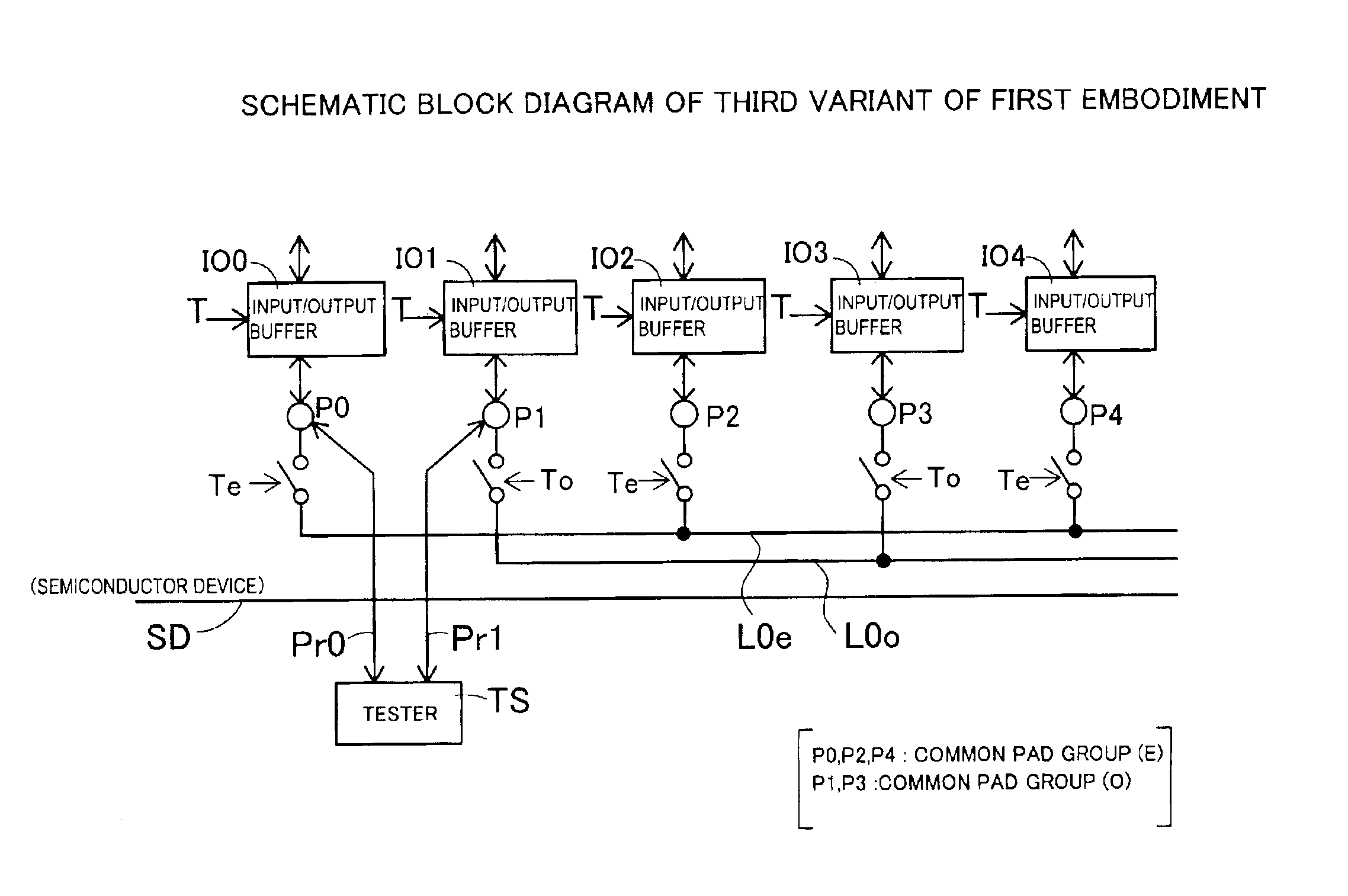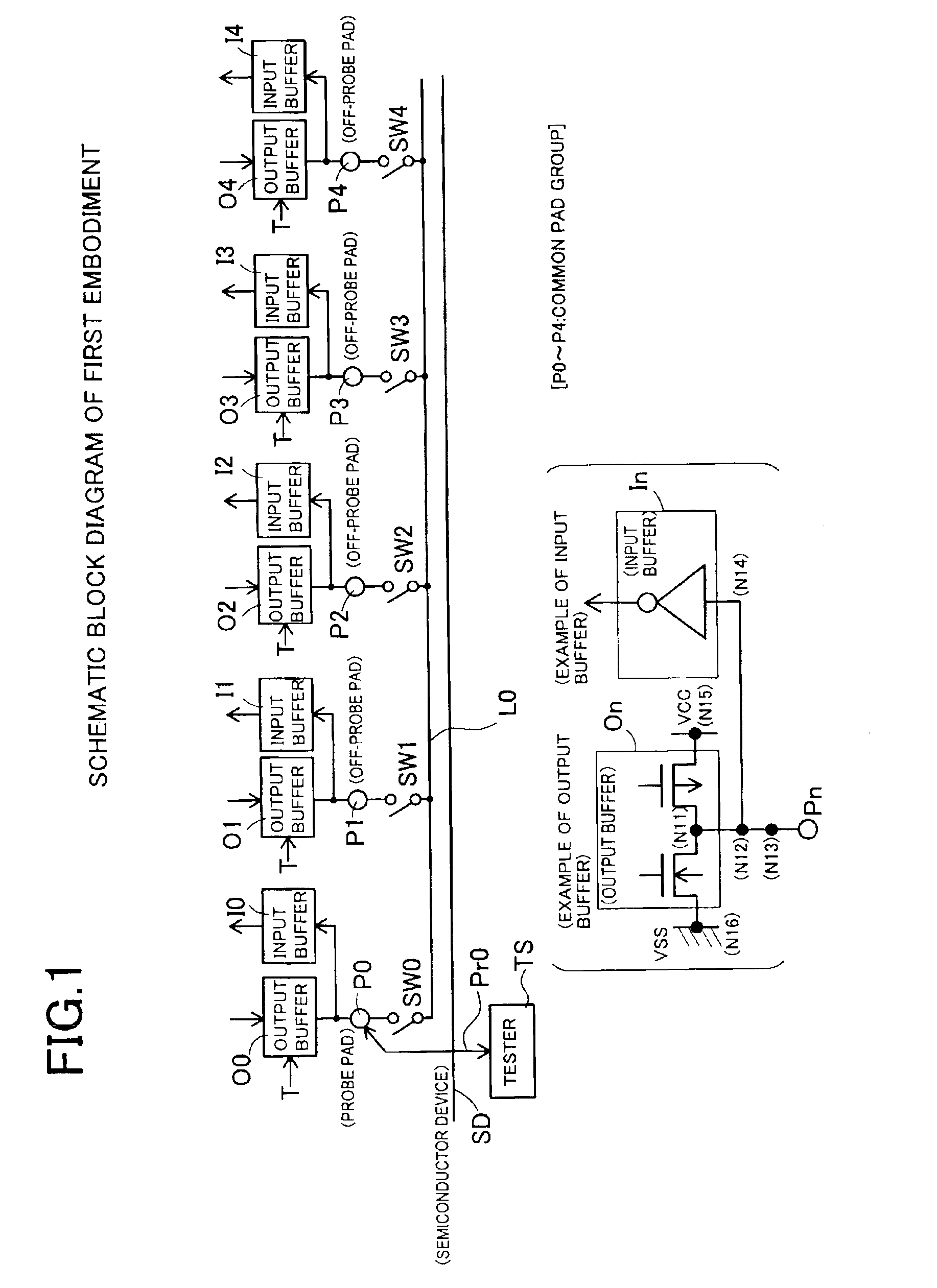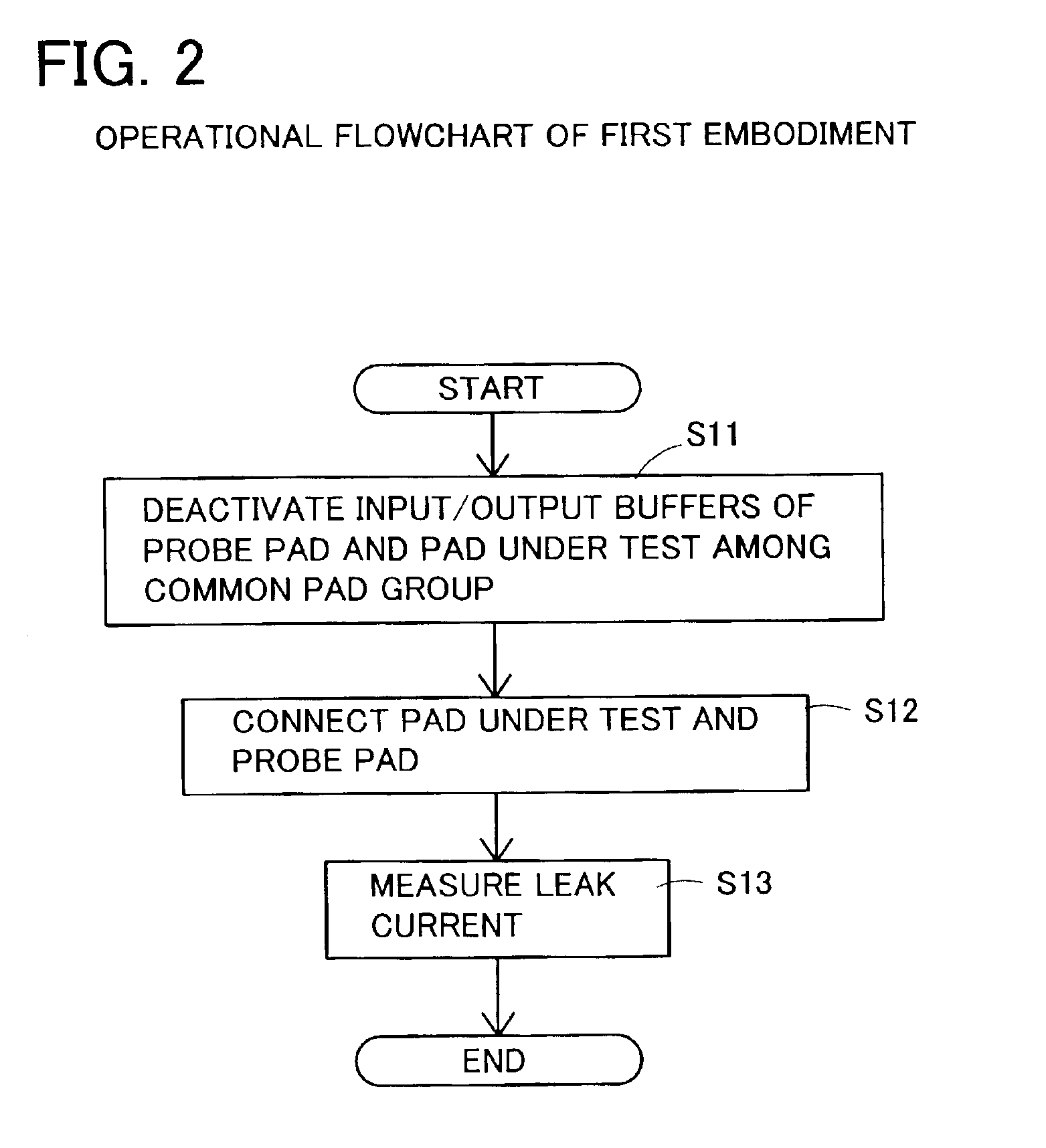Semiconductor device and test method for the same
- Summary
- Abstract
- Description
- Claims
- Application Information
AI Technical Summary
Benefits of technology
Problems solved by technology
Method used
Image
Examples
first embodiment
[0059]FIG. 1 is a block diagram of this invention, showing a circuit section of semiconductor device including input / output pads P0 through P4 of a common pad group for the input / output pad number compressive test. A tester TS has its probe Pr0 brought in contact with the input / output pad P0 which is designated to be the probe pad. Other input / output pads P1-P4 which are not made in contact with the tester probe Pr0 are off-probe pads. The number of off-probe pads, which is four in this example, can be more or less obviously.
[0060]These pads P0-P4 have associated input buffers I0-I4 each arranged to receive an input signal on the gate electrode of MOS transistors and associated output buffers O0-O4 each having a source-drive PMOS transistor and a sink-drive NMOS transistor as shown in the figure. Switch elements SW0-SW4 are connected between the input / output pads P0-P4 and a testing line L0.
[0061]The signal line originating from an input / output pad Pn is connected to the input buffe...
second embodiment
[0082]FIG. 7 is a block diagram of this invention, showing a circuit section of semiconductor device including input / output pads P0 through P2 of a common pad group for the pad number compressive test. This circuit arrangement is capable of performing the open-line test for the probe pad P0 which is made in contact with the probe Pr0 of the tester TS, as well as the off-probe pads P1 and P2 which are not made in contact with the probe Pr0.
[0083]The arrangement includes input buffers I0-I2 and output buffers O0-O2 for the input / output pads P0-P2 and switch elements connected between the pads P1 and P2 and a testing line L0, which are all identical to the counterparts of the first embodiment of FIG. 1. The testing line L0 is connected directly to the probe pad P0 in this embodiment.
[0084]Signals transacted through the input / output pads P0-P2 reach an internal signal storage ST such as a memory cell array or data bus. The input buffers I0-I2 and output buffers O0-O2 are activated or de...
fifth embodiment
[0124]FIG. 14 is a conceptual diagram of this invention. Input / output pads 1a-1d are connected to testing lines 14a, 14b through switch elements 13a-13d which are turned on by a switch control signal TM so that the number of input / output pads is compressed for the operation test. In this case, adjacent pads are connected to different testing lines as shown.
[0125]The following explains specific circuit arrangements of the fifth embodiment shown in FIG. 14 as a first through seventh variant of the fifth embodiment.
[0126]FIG. 15 shows the first variant embodiment. The input / output pads 1a-1d are connected to the input terminals of input buffers 11a-11d, respectively, so that the input signals put in to the input / output pads 1a-1d are conducted through the input buffers 11a-11d into the internal circuit.
[0127]The input / output pads 1a-1d are also connected to the output nodes of output buffers 12a-12d, respectively, so that the output signals from the internal circuit are read out throug...
PUM
 Login to View More
Login to View More Abstract
Description
Claims
Application Information
 Login to View More
Login to View More - R&D
- Intellectual Property
- Life Sciences
- Materials
- Tech Scout
- Unparalleled Data Quality
- Higher Quality Content
- 60% Fewer Hallucinations
Browse by: Latest US Patents, China's latest patents, Technical Efficacy Thesaurus, Application Domain, Technology Topic, Popular Technical Reports.
© 2025 PatSnap. All rights reserved.Legal|Privacy policy|Modern Slavery Act Transparency Statement|Sitemap|About US| Contact US: help@patsnap.com



